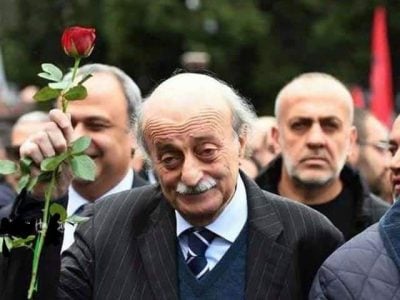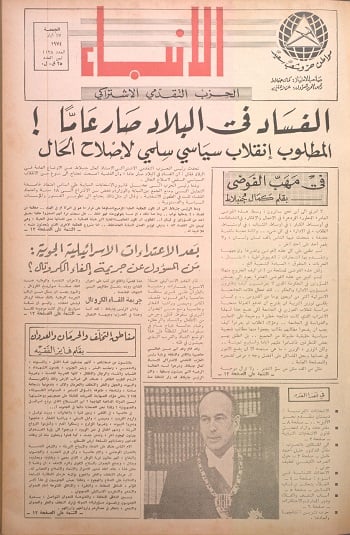Dresden bombing 70 years on: A survivor recalls the horror he witnessed in the German city
The Independent
17 فبراير 2015

On 13 February 1945, Victor Gregg was a 25-year-old British rifleman being held by the Germans in the beautiful city of Dresden. Having been captured in the Battle of Arnhem, he had twice tried to escape his POW camp, for which his punishment was to work in a soap factory, and this required him to walk 10 miles a day through thick snow (he was given a pair of wooden clogs). Unrepentant, he burnt down the soap factory, was sentenced to death and sent to Dresden for execution. There, he was held in an ad hoc ‘prison’, along with hundreds of other condemned men.
Like the guards and townspeople, Gregg did not believe the city would be bombed – there was a widespread understanding that the Allies would preserve its cultural heritage, just as the Germans had refrained from attacking Oxford. But, as he relates here, it was an unfounded assumption. Gregg was to witness unimaginable carnage that brought him decades of mental turmoil. Although a patriot, and by no means a pacifist, 70 years after the event he still believes that those who ordered the three-day bombing of Dresden could be guilty of a war crime, because they knew the devastation that would be wreaked on the civilian population.
After the raid, he eventually walked to the advancing Russian lines. This is his eyewitness account of the firestorm he left behind.
At about 10.30pm, the air-raid sirens started wailing, and because this happened every night no notice was taken. But after a short period of silence, a wave of pathfinders started to drop target flares. We saw them through a glass cupola: filling the sky with blinding light, they floated to Earth, dripping burning phosphorus on to the streets and houses.
As if in slow motion, the inmates of the prison began to realise they were trapped. (The guards had locked the doors and scarpered.) Then, the throb of hundreds of heavy bombers began to fill the air, getting nearer and louder by the second. The prisoners were banging on the doors and crying to be let out. I crouched beside a wall, as low as I could.
The flares were still falling when the initial stream flew over, dropping thousands of incendiaries along with the first bombs. A string would hit the ground in succession – like a drum roll – and the sky changed from a bright white to a dull red that danced before dying.
As the never-ending stream passed over, about four incendiaries burst through our glass roof, breaking it into fragments and shredding the luckless men beneath. The phosphorus clung to the bodies of the injured, turning them into human torches, but it was impossible to extinguish the flames and their screaming was added to the other cries. I was still untouched – but not for long…
Suddenly, a “blockbuster” dropped outside our building, blowing in the whole wall. (These thin-walled, massive missiles could demolish whole blocks with one explosion, hence the name.) I was thrown nearly 50ft and covered in brickwork and rubble. When I came to, I realised the smoke and fumes from the building’s burning shell were now being swept away by a gradually rising wind. Freeing myself, I stumbled over the debris and out of the building, which was slowly collapsing. There, I found a few other survivors, and the first thing that hit me was the heat. Wherever I turned, I was confronted with flames, smoke and dust – and all the time blocks of debris falling from the sky.
There were about a dozen in our group who were able to walk or stagger, and other small groups were moving between the heaps of rubble and the flames which, without warning, shot out of gaps in the walls. The noise of the planes died down and people started to appear from the few houses still intact. Survivors were clawing their way through mounds of rubble that an hour before had been their homes. We stumbled along the remains of a wide avenue, flanked by fires and mountains of red-hot wreckage. (I was saved by my wooden soles, which were so thick that I could walk over the glowing cinders.) Finally we found ourselves in open fields, next to a railway line.
Reaching safety, we saw another group approaching: about two dozen firemen, with a cart full of picks, shovels, buckets, rope coils and cans of drinking water. The leader immediately formed us all up, selected those who seemed capable and began to march us off, leaving the injured to fend for themselves.
Not everyone wanted to be offered as fuel to the furnace less than 500 yards away. But when three men hesitated, our leader turned round, drew his pistol and shot two at point-blank range. (The third started running as fast as he could to catch up.) So there we were: about 30 of us, led by a German whose answer to problems was to shoot now and ask questions later.
At first, we found people who had been caught out in the open and were still alive. By fixing bits of wood to our picks and shovels, we constructed stretchers and bore them away. But after about two hours, we headed back to the railway, where we discovered reinforcements and a food wagon had somehow been shunted in from God knows where. Then the sirens started their terrible wailing again and the people gathered in small bunches, as if to shield each other from the onslaught.
The planes were thousands of feet up, but you could see their outlines reflected in the glow. And as their bombs fell, we realised this raid was nothing like the first. The new bombs were so big that you could see them in the sky. Even the incendiaries were different – not metre-long sticks, but four-ton objects that exploded on the ground, incinerating anything within a radius of 200ft – and raining down with these came more blockbusters, 10-tonners this time.
Only 500 yards of open land separated us from the heart of the first raid. We could feel the terrible heat, our bodies shook as the ground vibrated. And as if this was not enough, another terror was making its presence felt: not really what you would call a wind; rather, the air being drawn in to feed the inferno was like a solid object, so great was its force.
The second raid had been in progress for about 15 minutes when, further down the line, the ground erupted in huge clouds of smoke and flame, and after the blasts came the enormous pull as air rushed into the vacuum. But our leader seemed keen to take us back into the furnace once these bombers departed.
This they did some 30 minutes later. And though there were still some stragglers above, now it was the action on the ground that mattered. Everything was in flames, even the roads, which were burning rivers of bubbling and hissing tar. Huge fragments of material flew through the air, sucked into the vortex. We could see people being torn from whatever they were hanging on to and drawn into the ever-deepening red glow less than 200 yards away.
A small group tried to reach us by crossing what had once been a road, only to get themselves stuck in a bubbling mass of molten tar. One by one, they sank to the ground through sheer exhaustion and then died in a pyre of smoke and flame. People of all shapes, sizes and ages were slowly sucked into the vortex, then suddenly whisked into the pillars of smoke and fire, their hair and clothing alight.
And, as if the Devil himself had decided their torments were insufficient, above the wind’s howl and the inferno’s roar came the interminable, agonised screams of the victims being roasted alive. What saved us was being on open ground with oxygen to breathe and, since the fires were getting worse, we abandoned any idea of approaching the city centre for now. It was a sea of flame rising into a sky of smoke. And with the air so hot that it was painful to inhale, we retreated to an island of safety. At dawn, we saw new gangs had arrived to fill up the craters and re-lay the track, and by mid-morning a small line of wagons was shunted alongside us. You had to hand it to the Krauts: the first thing they thought of was their bellies, and in the centre was a kitchen wagon, complete with hot soup, black bread and a 40-gallon drum of their ersatz coffee.
After eating, about 40 of us trudged into the smouldering embers edging the vast bonfire that still raged nearby. While other groups dug at the piles of masonry, clearing pathways, we were to uncover the cellars. But then the third raid started. Now it was the Americans, and the railway yards were their targets. This meant those who had escaped before were now getting the same treatment. And though the Americans dropped much less destructive bombs than the British, many more were killed.
When the raid ended, we continued with the cellars, prising them open with pickaxes and crowbars. Inside, we found the victims’ bodies, usually shrivelled to half their normal size or worse. (Children under the age of three or four had simply melted.) But most looked like they had died peacefully, through lack of oxygen, losing consciousness in the process.
We dragged their remains into the open, where they were examined for identifying marks and then piled up to await cremation – and this turned out to be the easy bit. Even the hardest of us would flinch as we got nearer to the site of the raid’s centre, where fierce fires still raged. But first we were fed and watered, and rested in a couple of old wagons that giant cranes had now lifted off the railway lines.
On the third day, everywhere I looked I could see men working in dozen-strong gangs and now, as we approached the city centre, the most terrible task began. Some of the corpses were so brittle that they crumbled into clouds of ash and dried flesh. Yet so methodical were the Germans that we were ordered to stuff any identifiable parts of these corpses into sacks. We wondered if the next day’s work could be any worse. But when ordered to tackle a sector where there was a chance of finding survivors alive, the news brought fresh life to the gang.
We set off to a small square, where what had been grass was now a bed of ash 4in thick, and the first three shelters we uncovered were empty. But further examination of the third revealed a tunnel leading to another, blocked by a collapsed roof. When we broke through and found four women and two small girls alive, we cheered ourselves hoarse. We all felt like heroes – there were no enemies, no hatred, just a sense of fulfilment. But sadly, this was a solitary event, as we learned the next day.

Trudging through streets where sheets of flame were still shooting up 100ft, we came to the door of a communal shelter, which took all afternoon to prise open. With the first inch or so, there was a hissing sound and the surrounding dust was sucked into the opening. Then, as the gap widened, a terrible smell hit us – and slowly the horror inside became visible.
There were no real, complete bodies, only bones and scorched articles of clothing matted together on the floor and stuck together by a sort of jelly. There was no flesh visible, just a glutinous mass of solidified fat and bones, inches thick, on the floor. Now we understood what we might find in the city-centre shelters. But that was not to be my fate. That evening, I was told I was being returned to custody – so I drifted off, walked over the bridge and eastwards to join the Russians…
There’s so much I have left out. Often, I get a shadow of recall, but nothing concrete remains. Everything was overwhelmed by the gruesome tasks we performed. It’s the horror that remains burned in my memory. And like Dresden’s fires, it seems impossible to extinguish.


 عن أمل جنبلاط المتجدد: لبنان يستحق النضال
عن أمل جنبلاط المتجدد: لبنان يستحق النضال
 صحافيون أم عرّافون!
صحافيون أم عرّافون!
 ماذا يجري داخل أروقة بيت الكتائب المركزي؟
ماذا يجري داخل أروقة بيت الكتائب المركزي؟


 عن الخرائط التي تُرسم والإتفاقات التي تتساقط!
عن الخرائط التي تُرسم والإتفاقات التي تتساقط!
 “الإنحراف في الحياة”/ بقلم كمال جنبلاط
“الإنحراف في الحياة”/ بقلم كمال جنبلاط
 هاشتاغ #صار_الوقت يحل أولاً في حلقة جنبلاط
هاشتاغ #صار_الوقت يحل أولاً في حلقة جنبلاط
 طاولة نقاش عن أزمة الصحافة في جامعة AUST
طاولة نقاش عن أزمة الصحافة في جامعة AUST
 عبدالله: ليظهر لنا وزير مكافحة الفساد حرصه في صفقات البواخر والفيول
عبدالله: ليظهر لنا وزير مكافحة الفساد حرصه في صفقات البواخر والفيول
 عبدالله: غريب أمر وزارة مكافحة الفساد!
عبدالله: غريب أمر وزارة مكافحة الفساد!

 Comment to Uri Avnery: How Sad What Is Looming Ahead
Comment to Uri Avnery: How Sad What Is Looming Ahead
 “Not Enough!”
“Not Enough!”
 … لمن لم يقرأ يوسف البعيني/ بقلم وسام شيّا
… لمن لم يقرأ يوسف البعيني/ بقلم وسام شيّا
 كمال جنبلاط في مولده الأول بعد المائة: تعاليمه وأفكاره ما زالت الحلّ/بقلم عزيز المتني
كمال جنبلاط في مولده الأول بعد المائة: تعاليمه وأفكاره ما زالت الحلّ/بقلم عزيز المتني
 رئيس حزب/ وليس (… سابقاً)/ بقلم د. خليل احمد خليل
رئيس حزب/ وليس (… سابقاً)/ بقلم د. خليل احمد خليل
 التوازن السياسي في لبنان
التوازن السياسي في لبنان
 لبنان… مشاريع انقلابية مؤجلة
لبنان… مشاريع انقلابية مؤجلة
 جنبلاط وحَمَلة أختام الكاوتشوك
جنبلاط وحَمَلة أختام الكاوتشوك
 Le Liban est un symbole de tolérance
Le Liban est un symbole de tolérance
 Our Automated Future
Our Automated Future
 The True Origins of ISIS
The True Origins of ISIS
 Les Misérables vs. Macron
Les Misérables vs. Macron
 عذراً أيها المعلم/ بقلم مهج شعبان
عذراً أيها المعلم/ بقلم مهج شعبان
 رساله الى المعلم / بقلم ابو عاصم
رساله الى المعلم / بقلم ابو عاصم
 إلى روح القائد والمعلم كمال جنبلاط/ بقلم أنور الدبيسي
إلى روح القائد والمعلم كمال جنبلاط/ بقلم أنور الدبيسي
 أسرار وعناوين الصحف ليوم الجمعة 14 كانون الاول 2018
أسرار وعناوين الصحف ليوم الجمعة 14 كانون الاول 2018














